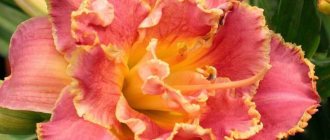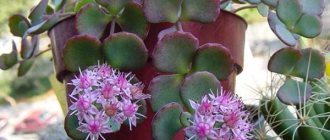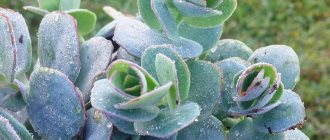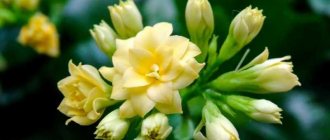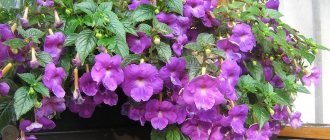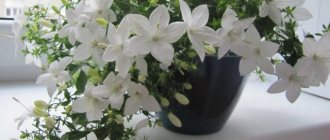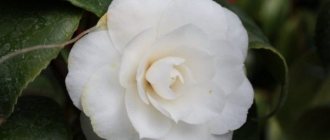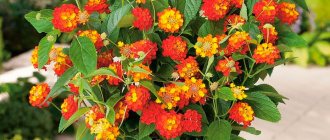The beauty of the daylily flower is that it is beautiful when it blooms. But the culture fades very quickly. Even in the evening you admire the blooming daylilies, and the very next day the buds will wither.
Author of the article
Maxim Sverchkov
Professional biologist and breeder with extensive experience and experience.
They are easy to care for. Regularly loosen the soil, apply fertilizers, and water. And take seriously the choice of place for a flower bed with daylilies.
Description of the plant
The scientific name of these plants, members of the Liliaseae family, is hemerocallis or redwort. The last name reflects the flowering characteristics of daylily.
After all, his life is very short - from evening to the next evening.
Daylilies are perennial plants, herbaceous, summer green. They have grooved leaf plates, linear in two rows.
Daylily leaves may droop in an arched manner or be directed upward. Up to a meter long, short thickened rhizomes in the shape of brushes. In the garden, daylilies can grow up to one and a half meters.
The peduncle can have forty flowers, three or four buds bloom at one time. The flowers resemble stars.
The ancient inhabitants of East Asia began growing daylilies two thousand years ago. The cultivation was carried out by the Chinese and Japanese.
They believe that sorrows leave the soul when the hand touches a daylily bush. Flowers contain lycopene and carotene.
Chinese healers use daylilies for hepatitis, hypertension and heart diseases, and for weakened patients to restore strength. They cook soups with daylily in chicken broth.
This meadow flower became a domestic flower in the 16th century.
In Russia, the name daylily was first mentioned in 1813.
This culture was developed with varying success, and now there are more than 50,000 daylilies.
Most species have been studied by biologists, and daylilies occupy a place of honor in landscape design. Make sure the soil has good drainage. Do not allow water to stagnate in the area with daylilies.
Reproduction methods
Daylilies can reproduce vegetatively or by seeds; the latter is often used by breeders in their work.
In plants grown from seeds, the characteristics are preserved when we are talking about natural species. Vegetative propagation is a guaranteed excellent result; as a rule, everything takes root.
Types of daylily
The best daylilies grow where there is plenty of bright sunlight. The shade has a bad effect on them: the flowers bloom less often or do not bloom at all.
The crop will begin to grow in April. In mid-May, the grass-like daylily will bloom. Then it’s time for the yellow daylily. The latest daylily, red, blooms by July.
Korean daylily
Korean daylily blooms for about three weeks. The grass-like one blooms for almost two months, and it can bloom again in the middle of September.
Depending on the type of daylily, flower stalks can contain about 54 flowers. Korean daylily is distinguished by its miniature flowers, no more than 4 centimeters.
Red daylily
Red daylily has the largest flowers, they reach 13 centimeters in length. The longest peduncle is that of the red daylily, about 90 centimeters, and the shortest is that of the grassy daylily - only 30 centimeters.
The color of daylily in the perianth area ranges from orange to yellow.
Flower growers use the following classification:
- extended flowering - blooms for more than one day, long-flowering;
- diurnal - bloom during daylight hours;
- nocturnal - bloom at night.
The grass-like daylily blooms longer than the others. Having begun to bloom at seven in the morning, it can wither only on the third day.
Yellow daylily flowers can last a long time: after opening at about eight in the morning, they bloom for at least two days.
Korean daylily or Middendorf daylily blooms early in the morning and blooms for no more than a day. Lemon daylily is interesting: it also blooms in the morning and does not fade during the day.
Just listen to these beautiful names:
- pink daylily;
- double daylily;
- black daylily;
- daylily double;
- Stella daylily;
- red daylily;
- daylily siloam.
In 1934, A. Stout published a monograph on daylilies. They discovered the potential of the gene pool of this plant.
Stout described on the pages of the monograph the diversity of all existing daylilies.
In total, there were almost two hundred varieties of daylily. It was called "farmer's daylily" because it was used to plant borders in fields. In America it was of no interest, except for scientific research.
Three years later, a technique for breeding flowers with a larger number of chromosomes appeared. They are called polyploids.
Scientists studied how colchicine affects plant cells. And already in the 50s of the twentieth century, the chemist Fey and Dr. Griesbach developed methods for colchicination of daylily seed material.
During the research, it was established that varieties of red daylily are diploids, but it itself is a triploid and does not form seeds.
Most daylilies are diploids, whose breeding potential has been exhausted. Griesbach interacted with daylily growers and merchants, conducting a number of practical sessions for them.
The mid-1950s were marked by the development of new, tetraploid daylily varieties. Their difference from diploids is that they are more resistant and grow faster. And planting daylilies in the spring is favorable, because they begin to grow earlier.
The number of chromosomes in them is doubled. Tetraploid varieties have more than fifty buds and more flowers. The petals of tetraploids are thicker, rounder and stronger.
At first, the seeds of tetraploid varieties were nonviable and poorly fertile. Breeders managed to obtain new varieties.
Where the climate is warm, such as France and Australia, it will take seven to nine months. Under Russian conditions, seedlings will bloom only after two years.
The main branch of plant growing in America can be considered the hybrid daylily culture. To confirm this, it is enough to study the sales volume and the number of flowers grown.
The American Daylily Society was created to maintain scientific interest in these flowers and register new clones.
This is easy to do, which is why there are varieties that are of no value. There are also original ones that are not registered, such as those bred by the French breeder Pierre Enfosso.
Commercial replication of popular varieties by the microclonal method was unsuccessful. This is due to the fact that daylily clones bear little resemblance to their parents. The flower stalks are deformed, the fringe of the petals disappears, and the color becomes less bright.
A number of semi-evergreen and evergreen daylilies are considered insufficiently winter-hardy; they are not adapted to Russian wintering, to successful development and growth.
But in different regions of our country there are differences in natural and climatic conditions, and the introduction of new varieties is carried out depending on the specific location.
Over three thousand varieties of daylily have been tested in the Russian Federation. The main sign of the successful development of floriculture is the activity of flower growers around the world in the field of selection.
About species and varietal daylilies
Species daylilies are very popular among Russian flower growers. Varietals go through selection. It takes a lot of time. They are unpretentious and resistant to cold. Unless the arid south does not suit them.
Winter-hardy varieties are used in design.
Daylilies were first described by Pliny in his treatise Natural History. Then, in the 70s AD, Dioscorides said that the flowers and leaves of yellow daylily have medicinal properties.
And in the 15th century, “Herbalists” began to be produced in Europe, where famous varieties were also described.
Daylily yellow
Belongs to Asian varieties. In Russia, he loves the slopes and outskirts of forests, the banks. Blooms in early summer. Up to a meter high.
The flowers are fragrant, lemon-colored, the inflorescence contains about ten pieces. The foliage is wide, bright, attractive.
Daylily brown-yellow
The origin of this daylily could not be established, but the geography of its growth is extensive. Its dried flowers are called golden needles.
Each new flower grows in the fold of the old one in the opposite direction. It is soft underneath, although hard on top. Peduncles are bare and longer than the foliage.
The number of yellow-orange flowers, similar to lilies, can reach 20. Their inner part is red, the perianth lobes have wavy edges.
Of interest are the semi-double and terry forms. Ordinary flowers become double over time.
Daylilies are suitable for any conditions. When snow falls, he is not afraid of even forty-degree frost.
Small daylily
In Russia, Siberia is close to this daylily. Graceful daylily bushes are low, not much more than half a meter in height.
Narrow leaves touch the ground. There are up to five flowers in an inflorescence; they appear at the end of spring, and in June they already bloom profusely.
Daylily Middendorf
Daylilies do not grow only in Kamchatka. Slopes, deciduous forests, and cliffs suit them. The foliage is drooping and narrow.
Near the base of the fresh leaf blades you can see the remaining leaves from last year. Fragrant orange flowers in tall peduncles.
Daylilies bloom in May and throughout the fall. Seed ripening occurs in July.
Modern varieties are tetraploids. After the first flowering cycle, they undergo a second. The main thing is that the summer is warm and long. It is a mistaken belief that only tetraploids are charming.
Diploid varieties are just as beautiful, with large flowers with serrated petals. You can see watermarks, colored borders, and flounces on them.
If the summer is cool and there is little sun, the perianth will not be able to open. However, the bright sun can also destroy flowers.
This is possible with some varieties, so for them you need to choose partial shade.
Remember that it is better to buy seeds from people you know. If you come to the exhibition for seed material, also choose proven ones. It is even more risky to buy from someone else.
Even if you are interested in modern varieties, do not give up old, well-proven ones. Among them there are interesting samples. One of them has yellow flowers and a lilac underside, the other has orange...
The store may sell re-sorted items. Although if you do buy seeds there, do the following. When you get home, plant the division in a shallow container so that all the roots fit. The soil should be slightly damp.
Then cover the container with a plastic bag with several holes and place it in the refrigerator. Ventilate it every week, moisten it and check for mold formation.
If necessary, buy Fitosporin M for spraying. When April arrives, place the container on the windowsill and water as needed. And in May, harden off and plant.
In another article we described a flower called Heliopsis.
Growing a plant
Daylilies are considered long-lived. They live without replanting for up to ten years in one place. Flowers are very unpretentious. Both partial shade and sunny side suit them.
The soil should be close to neutral, but the flower will grow on slightly acidic soil. It is better to fertilize it, but even without feeding, daylilies will be able to develop normally.
And they are not afraid of drought, although in the heat, do not forget about watering. Weeds overwhelm the plants in the first couple of years.
Then the spreading daylilies simply do not allow them to exist in peace. Harmful insects and diseases also avoid them.
Daylilies have a compact rhizome with short but powerful branches. Penetrating deep into the ground, the roots form stolons there.
The leaf plates forming the basal rosette are curved and long. Above them grow peduncles, strong and straight, the buds on which open gradually.
They don't need a garter. Daylily flowers resemble lilies, but their shapes are more interesting. Their palette is varied.
Particularly beautiful are those with rings or stripes of a different color. There are also varieties whose leaves are white-green. Daylily has very beautiful leaves.
It is planted next to plants that do not have a beautiful lower part, in front of tall flowers.
Earlier we talked about Astilboides.
How to make proliferation
The term “proliferation” should be understood as “rooting of inflorescences,” a method that allows you to grow daylilies that have the characteristics of the variety.
It is important that the leaf rosettes (proliferations) develop well, so the peduncle is left on the plant until its upper part dries out completely. After this, the peduncle is cut off and the leaves are shortened by one third, and the rosette is placed in water so that the roots develop.
A growth stimulator will help speed up the process; add 1-2 drops of Zircon and Epin to the container. In the photos of daylilies presented in our gallery you can see a variety of varieties that allow you to create unique landscapes.
Classification of daylilies
Daylilies are distinguished by flower size:
- miniature (no higher than 7 cm);
- medium-flowered (not higher than 12 cm);
- large-flowered (not higher than 17 cm).
Depending on the height of the peduncles, daylilies are divided into:
- dwarf. Since their height is small, almost 30 cm, they are suitable for the formation of rocky hills and rockeries.
- short. Already a little taller, reaching half a meter, suitable for borders. Popular are “Mini Stella”, “Little Greta”, “Vini”.
- average. Up to 80 cm. They frame ponds and are planted in the form of separate clumps and in groups. tall. Up to a meter, they look great individually along the perimeter of the entire site. Popular among
- flower growers varieties: “Abstract Art”, “Barbara Host”, “Bourbon King”, “Varzity”, “Gusto”, “Zats Fan”, “Strawberry Candy”, “Little Darling”, “Night Bacon”, “Olweis Afternoon” , “Regal Air”, “Red Sea”, “Terkin”, “Black Magician”, “Black Prince”.
There is a classification of daylilies according to the degree of winter hardiness:
- dormant, they are also called deciduous. The most winter-hardy, can grow in many Russian regions. The foliage of these daylilies falls off immediately with the onset of autumn cold, and buds are formed at the same time.
- evergreen. They will be destroyed by wintering in Russia. The foliage persists until frost strikes, and then withers. With the onset of thaws, evergreen daylilies form winter. Some types of such flowers do not tolerate frozen soil. There are known varieties of daylily that do not fade for a day
Planting a plant
Daylilies are decorative flowers. They are spectacular in a mixborder next to a pond; they can be planted in groups or individually. Dwarf varieties are suitable for rose gardens.
Thanks to their beautiful foliage, daylilies look beautiful with any roses. Most daylily varieties bloom when roses have finished their initial wave of flowering.
If they are low, the same low varieties of daylilies are combined with them. Try to combine with large flowers, since daylilies are quite powerful. Maintain a small distance between them.
Planting is carried out in the spring, when the above-ground part reaches 15 centimeters. It is possible to plant daylilies when flowering ends, or during the growing season.
Prepare the flower itself. Shorten the roots of the daylily by 1/3, keep them in a saturated solution of manganese, sprinkle with a root former, for example, “Kornevin”.
Choose a suitable place on the site, dig a hole. Mix the dug soil, sand, compost, peat in equal proportions, pour 200 g of ash on top, water it and place it in the hole.
Make a mound in the middle and place the plant, carefully straightening out all the roots. Cover with sand. Water thoroughly. Mulch the ground under the daylily.
Planting site, soil
Lychnis perennial - planting and care in open ground
Daylily prefers open, well-lit places. Varieties with dark-colored petals fade quickly in sunlight; for such plants, it is recommended to create partial shading during the midday hours. When planted in the shade, the daylily will bloom poorly. The perennial can be grown in containers.
Attention! For successful flowering, daylilies need to be in the sun for at least 6 hours a day.
The plant loves loose fertile loams with a neutral or slightly acidic soil reaction. If the soil on the site is heavy, humus and sand are added to it. Light sandy loam soils are filled with compost. The perennial has a root system with thick roots that are prone to rotting. If groundwater is close, it is necessary to do drainage or plant flowers in high beds.
Features of care
Remember the main thing: complete fertilization of the land, plenty of water and natural light are important. With the arrival of spring warmth, fertilize the soil using potassium and nitrogen.
To do this, dissolve a tablespoon of potassium and the same amount of nitrogen in 10 liters of water. Expect to use half a liter of solution for each flower.
When flower stalks appear, phosphorus feeding will be needed. To do this, loosen a tablespoon of the substance under each bush.
If the daylily has faded, take a tablespoon of potassium and the same amount of phosphorus and dissolve it in 10 liters of water.
In subsequent years, either in the spring, sprinkle ash (half a glass is enough), and in the fall - rotted manure in a small amount or "Gumi" or "Fitosporin".
Additionally, daylilies do not need to be fed. Try “AVA” fertilizer - one teaspoon is enough for the soil every three years.
Remove buds and flower stalks that have already completely faded. This way you will help the daylily maintain its decorative properties.
Excess or lack of fertilizers
Many gardeners determine the reasons why daylilies do not bloom by the condition of the tops. Too much growth indicates an excess of nitrogen. Daylilies should be fed regularly, but without increasing the dosage. It is recommended to apply nitrogen-containing preparations in the spring, and to use potassium and phosphorus preparations in the summer-autumn.
Underfeeding a bush is just as bad as overfeeding.
